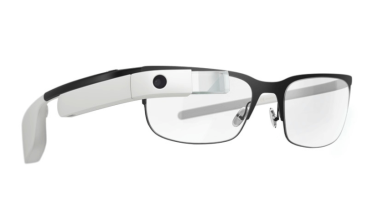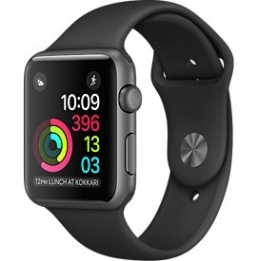The Apple Watch, various offerings from Garmin and LG, and devices like Google Glass have brought to the (wealthy) masses technology only previously dreamt of in science fiction films. From providing real-time updates of text messages and phone calls, organising day-to-day tasks, and measuring steps taken and heart rate, wearable technology devices are the future of our wardrobes and are set to replace mobile phones, laptop computers and tablets. While adoption of wearable technology has been comparatively slow when examined against smartphones, the Apple Watch in particular has seen steady popularity growth, with a rate of around 25% leading to the year 2020.
But what does this mean for marketers?
 A large drawback of wearable technology is the small size of the screens. This, in combination with the time spent looking at a wearable device means marketers are forced to adapt the information presented to essentially fit more content into less space. Where a consumer may spend 5-10 seconds watching an advertisement before a Youtube video on their iPhone, the same person may only spend 1-2 seconds glancing at their Apple Watch to check the time; marketers must therefore find ways in which content can be interesting enough for it be absorbed fully using such a small medium.
A large drawback of wearable technology is the small size of the screens. This, in combination with the time spent looking at a wearable device means marketers are forced to adapt the information presented to essentially fit more content into less space. Where a consumer may spend 5-10 seconds watching an advertisement before a Youtube video on their iPhone, the same person may only spend 1-2 seconds glancing at their Apple Watch to check the time; marketers must therefore find ways in which content can be interesting enough for it be absorbed fully using such a small medium.
 Contrarily, making use of features such as heart rate monitors and the GPS common on most smart watches can be used to gauge a consumer’s level of interest when presented with a marketing tool external to the device itself. For example, the device’s GPS will recognise when a wearer is within a certain proximity to a billboard, and the heart rate monitor will indicate whether or not the viewer is interested or not depending on whether there is a change. This can show, in real time, which tools and mediums are most successful, and can provide marketers with invaluable information passively, without need for surveys or probing consumers for information.
Contrarily, making use of features such as heart rate monitors and the GPS common on most smart watches can be used to gauge a consumer’s level of interest when presented with a marketing tool external to the device itself. For example, the device’s GPS will recognise when a wearer is within a certain proximity to a billboard, and the heart rate monitor will indicate whether or not the viewer is interested or not depending on whether there is a change. This can show, in real time, which tools and mediums are most successful, and can provide marketers with invaluable information passively, without need for surveys or probing consumers for information.
In summary, the steady rise of wearable technology will, with a little outside-the-box thinking, provide marketers with crucial information for use in developing and selling an attractive product.
Some interesting thoughts for marketers to ponder here. Do you think wearable technology will reach a similar adoption rate as mobile phones today? Are they a must-have accessory for consumers?
LikeLike
Adoption rates for wearables are significantly lower than the rates of adoption for smart phones and tablets. I attribute this primarily to the high cost for relatively low functionality of most current wearable technology, particularly when compared to a smart phone or tablet that already performs these tasks. However, as functionality of smart watches and similar products increases, and costs decrease in the coming years, I predict the wearables will be more commonplace, and marketers should remain on top of the potential advantages of using them.
LikeLike
Nice work! These devices have certainly changed consumer behaviour and thus demands. WHat do you think is next on the agenda for wearable digital technology?
LikeLike
I think the trend we’ll see is the gradual migration of wearables from sidekicks to our phones, and their transition into more independent devices. With the size of phones getting smaller and smaller, I think we’ll see smart watches and similar devices gaining more and more features in the near future.
LikeLiked by 1 person